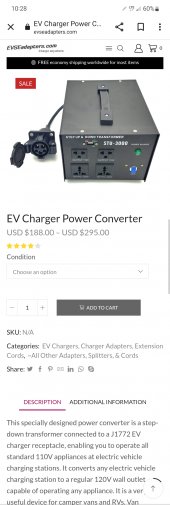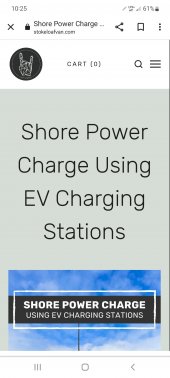Ok so that thing is a portable center-tap autotransformer aka 'travel converter' with a J1772 receptacle as its power cord, and i guess (i hope?) the j1772 has whatever little resistor spoofs in it to make the EVSE turn on.
But.. that autotransformer is a pretty low power device. I've got two such things and have become familiar with them.
For one thing, the 3000 written on the front, is a watt number for a short duration. If you look at whatever the specs say about 'continuous' loads, it's probably about ~1250w for that thing. At that rate you are not much better off than pulling up next to a building with a regular nema 5-15 outlet on their exterior wall and just plugging into that (other than you actually pay for permission with a charging station..). The ratings have to do with heat buildup. If you actively cool the thing you can go higher. But then you get to the next problem with those..
The receptacles on the front panel. You cannot take 3000w out of any single one of them without melting the receptacle's plastic housing and having your plug get stuck in it and be all nice and discolored when you finally rip it out.
I dont remember seeing what charge rate you are trying to achieve but if you go this route, I would honestly plan on hardwiring your own connector AND doing some kind of active fan cooling if you plan to charge at >1500w for any length of time.
I'm actually using a 5000w version of this type of appliance as the autotransformer providing neutral/120v for my whole house, BUT i am hardwired out of it and added cooling. I also have a 3000w version in my RV that i pretty much only use at <1500w.
Bottom line, though.. EVSE already passes through 240v. If you aren't using the 120v/neutral functionality of this transformer device, it has no reason for existing in your plan and is just costing money and adding failure points.










